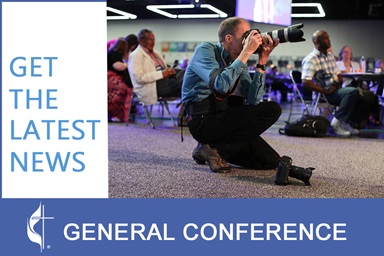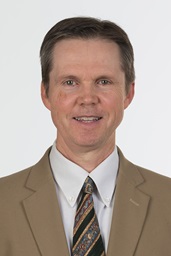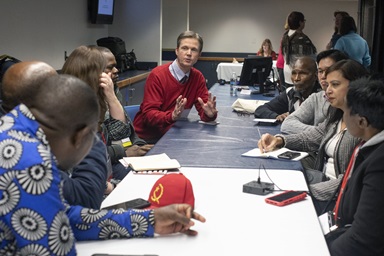Direct sunlight, a wooded, natural setting, access to a patio with a view — staff at the United Methodist North Carolina Conference Center find a lot to like about their building.
Christine Dodson, the conference treasurer, is among those who appreciate the aesthetics of the five-year-old building in Garner, near Raleigh.
“Our view from every window is a natural scene,” she said, noting that the shift from the previous ‘60s-era conference headquarters has been a real morale-booster. “It just a more calm and serene setting.”
THE POPE'S ENCYCLICAL
By Thomas Kemper
Pope Francis’s encyclical on climate change is a dynamic appeal to people of all nations and faiths to join in respecting and protecting “our common home.” It puts squarely on human shoulders the responsibility for the natural environment and its future.
“Laudato Si’” (“Praise Be to You”) is a most-welcomed contribution to the existing interfaith conversation on the vast range of environmental, economic, industrial, and lifestyle it addresses.
Those windows are not only an employee perk but also a benefit of an environmental commitment to seek LEED certification that has resulted in energy efficiency, financial savings and, potentially, more money for ministry. The move brought utility costs down 25 percent.
What it means to be certified
LEED is a rating system that provides verification of a building’s “green” features related to design, construction, operations and maintenance.
The Evanston, Illinois-based headquarters of the Board of Pensions and Health Benefits and the Board of Church and Society building on Capitol Hill in Washington have LEED certification. Some United Methodist-related colleges and universities also have pursued LEED ratings. Portland, Oregon’s commitment to green energy was a positive factor in its selection for the site of the 2016 General Conference.
Examples of local churches that have acquired LEED certification include:
- a modern addition to the traditional sanctuary of First United Methodist Church of Orlando in Florida;
- the new 1,200-seat sanctuary of Christ United Methodist Church in Plano, Texas;
- the first certified church in Arkansas, Pulaski Heights United Methodist Church in Little Rock;
- an enlarged and remodeled facility for Faith United Methodist Church in Champaign, Illinois;
- a new worship facility at Grace United Methodist Church in Lee’s Summit, Missouri.
The Rev. Pat Watkins, a missionary for the Care of God's Creation, United Methodist Board of Global Ministries, pointed out that embarking on the certification process requires a commitment to “green” building. “It also has a financial implication, in that it will usually cost a little more up front for certification, but, due to energy savings, will more than pay for itself in the long run,” he said.
Faithful investment in the earth
Last week, the Vatican released Pope Francis’ encyclical on climate change. In November 2009, the United Methodist Council of Bishops offered their own foundation document on the environment, “God’s Renewed Creation: Call to Hope and Action.”
Both statements, Watkins said, have “the interconnection of issues related to both people and the planet” as a focal point, offering a “unique voice of faith” to the larger discussion on climate change.
An environmental questionnaire from the Council of Bishops appeared in 2008 as a design team from the North Carolina Conference was making decisions for a new headquarters to be built on land purchased earlier in the decade, Dodson recalled. The team already knew that retrofitting the old building would cost the same amount of money.
One of the design team members was the Rev. Joe Mann, then director of the rural church program area for The Duke Endowment. “He encouraged us…to look for (LEED) certification to be an example to local churches, to show it could be done,” she said.
Attaining a silver LEED rating added roughly $270,000 to the total project cost — financed through the sale of the old property — of about $5 million, she noted.
A grant to cover the certification expenses came from The Duke Endowment, which believed the new conference center would be a good example for local churches, said the Rev. Robb Webb, current director of the rural church program.
“We felt this was a wonderful way to demonstrate how environmentally friendly buildings are practical and glorify God,” he added.
More local churches in North Carolina now are aware of the LEED process and even if they haven’t pursued certification are using other energy-saving methods, Webb said. The rural church division offers guidelines to encourage churches to incorporate “green” building practices during construction and renovation projects.
The Duke Endowment itself completed a new headquarters building in Charlotte last year with a green roof, reduced energy use and more efficient use of water, which earned it a Gold LEED certification. Employees also have a bike-sharing program.
Like Dodson, Webb feels uplifted by his new workspace.
“I don’t have any evidence for this (but) my general feeling is the air feels cleaner,” he explained. “I’m on the third floor and I look out on a roof that has plants and succulents growing on it. I feel like it brightens the workplace.”
Bloom is a United Methodist News Service multimedia reporter based in New York. Follow her at https://twitter.com/umcscribe or contact her at (646) 369-3759 or [email protected]
Like what you're reading? Support the ministry of UM News! Your support ensures the latest denominational news, dynamic stories and informative articles will continue to connect our global community. Make a tax-deductible donation at ResourceUMC.org/GiveUMCom.





